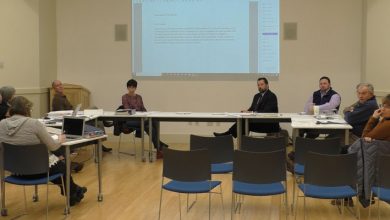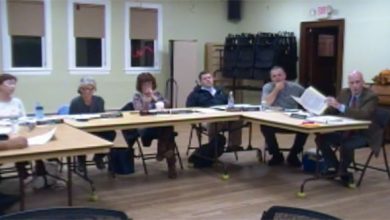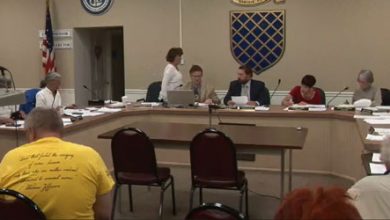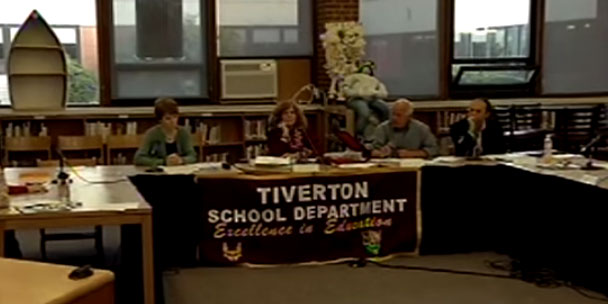Tiverton Schools’ Projected Enrollment Increase Doesn’t Pan Out
One peculiar projection in the Tiverton School Department’s budget presentation, this past spring, was that enrollment would increase, to 1,890 students, for the 2015-2016 school year. At the beginning of the prior school year (2014-2015), enrollment was 1,871. In March, Tiverton Fact Check questioned the likelihood of that actually happening.
Even more peculiar, the department’s chart predicting the increase showed it all being attributable to the high school. When I asked what led to that prediction, Finance Director Douglas Fiore responded in an email that the department expected “the incoming freshmen class to be greater than the graduating senior class.”
Boy, did that not happen.
As it turned out, 21 students who started the 2014-2015 school year in Tiverton’s eighth grade class didn’t move on to the high school. In all, the high school’s enrollment shrank by 31 students.
Enrollment can fluctuate throughout the year, but the 2015-2016 school year began with Tiverton’s smallest freshman class since at least 1998-1999, which is the earliest year for which data is available.
The first-grade class is also the smallest on record, as well as the smallest in Tiverton this year. If it weren’t for a big jump in kindergarten, perhaps due to the new all-day schedule, enrollment in Tiverton schools would have fallen by 62 students, or more than 3%. Counting the 34 new kindergarteners, the drop was still 1.5%.
These numbers add up over time. Starting with the peak year of 1999-2000 — when the district had no pre-K and only half-day kindergarten — Tiverton has lost 454 students. That’s 20%, or one in five desks that are now empty.
Because the school department built its budget on the expectation of 1,890 students but ended up with only 1,843, the amount that Tiverton is spending per pupil is $397 higher than budgeted, almost reaching $16,000 per student. With the decrease in enrollment, the school department’s budget could have been $732,630 smaller and still had the same amount for each student who remained.
At some point, even the most ardent advocates for greater school spending will have to wonder why a student body that’s 20% smaller than at the turn of the century needs a budget that’s almost twice as big as the audited expenses for that year, particularly given the questionable results on recent standardized tests.
Note on the numbers:
For both enrollment and spending, it’s possible to find multiple different numbers that look like they are supposed to be the same thing but aren’t.
For its own purposes, for example, the state doesn’t use the October enrollment figures, but rather the average daily membership (ADM), or the average number of students who were estimated to be enrolled on a given day. Unfortunately, that data isn’t as easily accessible for as many years. Based on the most recent five years for which there is complete data, the ADM is typically about 5% smaller than the October enrollment, so 2015-2016 can be predicted to be around 1,754.
Similarly, the state’s total spending numbers for Tiverton, under its Uniform Chart of Accounts (UCOA), differ from Tiverton’s budgeted numbers. For the same five years, the Tiverton school department has reported about 6% more spending to the state than was budgeted by local taxpayers. Moreover, documents calculating every district’s per-pupil spending put Tiverton’s total budget even higher — 10% of the budgeted number, on average. The difference is likely to be in what’s counted, especially federal funds.
As a consequence of these adjustments, the numbers provided above as Tiverton’s per-pupil spending are probably lower than the actual spending. Adjusting the 2015-2016 October enrollment down with an estimate of ADM and adjusting the budget up with an estimate of UCOA spending, the per-pupil spending in Tiverton would come out to $17,736 for the current school year. Using the spending data from the state’s per-pupil calculations, the Tiverton school department could be spending as much as $18,421 per student.
ADDENDUM (12/8/15 6:27 p.m.)
The 5% difference between October enrollment and ADM may largely result from kindergarteners’ being counted as full students whether they’re half-day or full-day for October enrollment, but only as half-students for ADM. If that’s the case, then the ADM number will be closer to the October enrollment number than has historically been the case, and the highest per-pupil spending number wouldn’t be $18,421, but $17,534.



